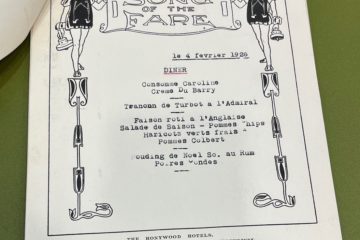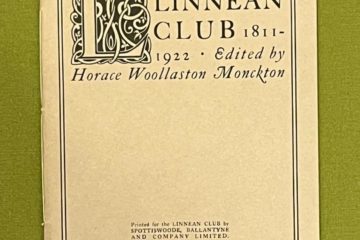Pub Anyone?: The History of the Linnean Club
This month’s 'Treasure of the Month' focuses on a couple of rather unexpected items in the archive: two drink tokens.
Published on 12th November 2025
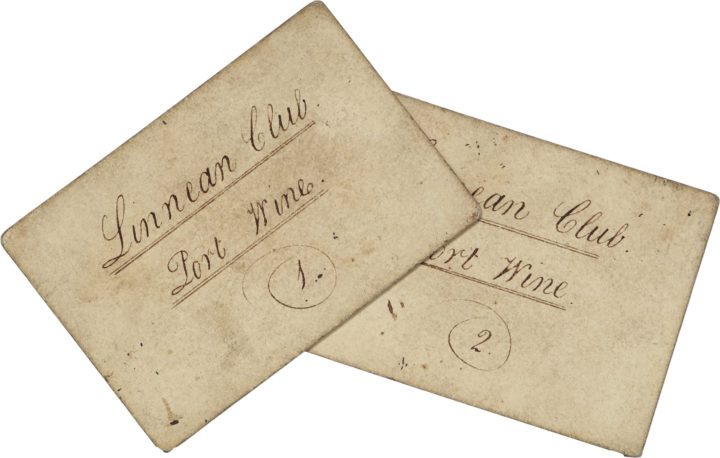
Drink tokens (LDC/9) (The Linnean Society of London)
To shed light on these surprising pieces, we must turn to the correspondence collection of our founder, and first President, Sir James Edward Smith (1759–1828).

William George Maton (Royal College of Physicians, London)
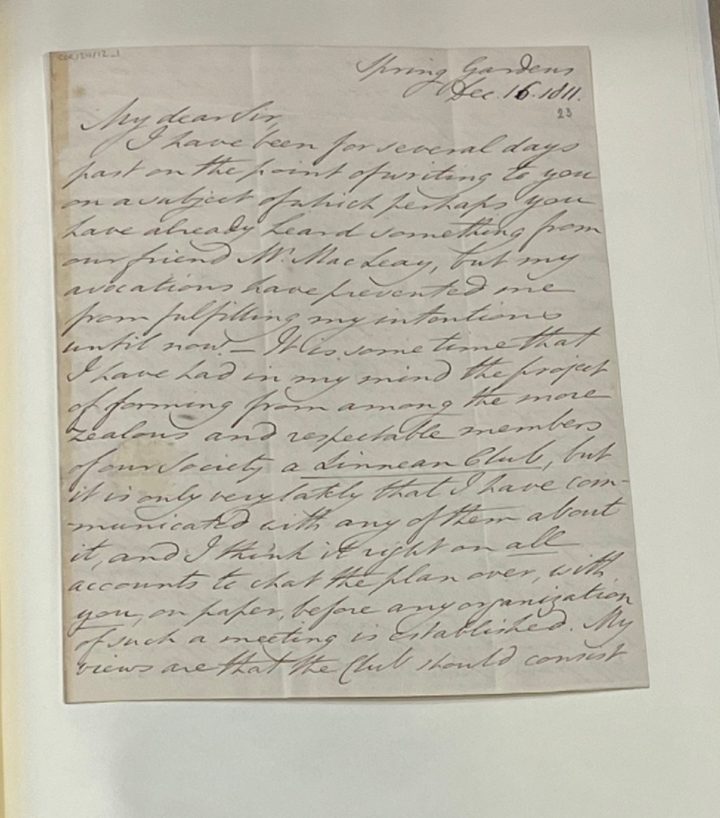
Letter from William George Maton to James Edward Smith (JES/COR/24/12)
(The Linnean Society of London)
In a letter dated 16 December 1811, Linnean Society Vice-President William George Maton proposed setting up a small club of Fellows to convene socially once a month after general meetings, “at some respectable tavern, as near as possible to the Society’s house”. He wished for: “the objects of our circle to be a mutual encouragement of one another in the prosecution of our favourite science, and to promote the interests and prosperity of the Linnean Society by all the means in our power.”
Maton assured Smith that it would be limited to 15–20 members and that they would only approach the "more zealous and respectable members" of the Society.
Rules...and beverages
The idea was clearly well received by Smith as, the very next day, the first meeting of the Linnean Club (as it became known) took place. It was held at the British Coffee-House Tavern on Cockspur Street, London, and, from the Minute Book entry, we know that it was a very productive get together.
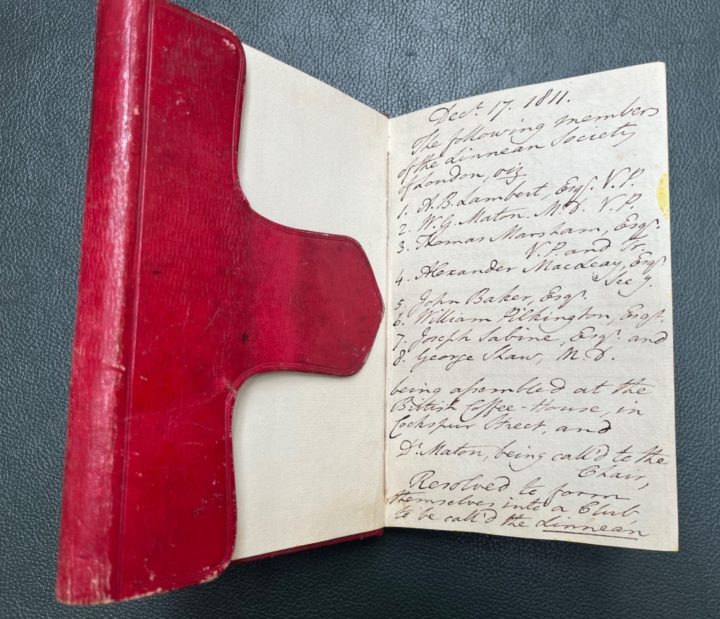
Linnean Club Minute Book (LDC/1/1) (The Linnean Society of London)
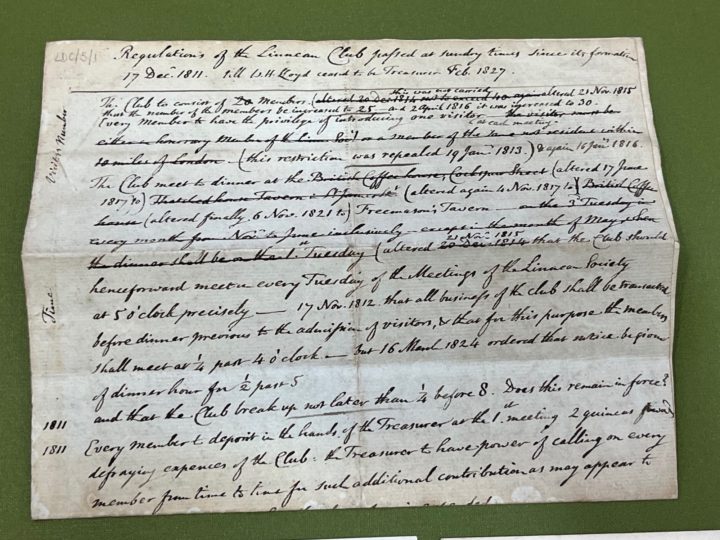
List of rules (LDC/5/1) (The Linnean Society of London)
The eight people in attendance were William George Maton (acting as Chair), Aylmer Bourke Lambert, Thomas Marsham, Alexander Macleay, John Baker, William Pilkington, Joseph Sabine and George Shaw. Whilst presumably partaking of a few beverages they also managed to establish the first set of rules, and decided who should make up the rest of the initial 20 members, including Smith as President, Robert Brown, Viscount Valentia and Samuel Goodenough, the Bishop of Carlisle.
Problems...and rivals

Letter from Goodenough to Smith (JES/COR/11/103) (The Linnean Society of London)
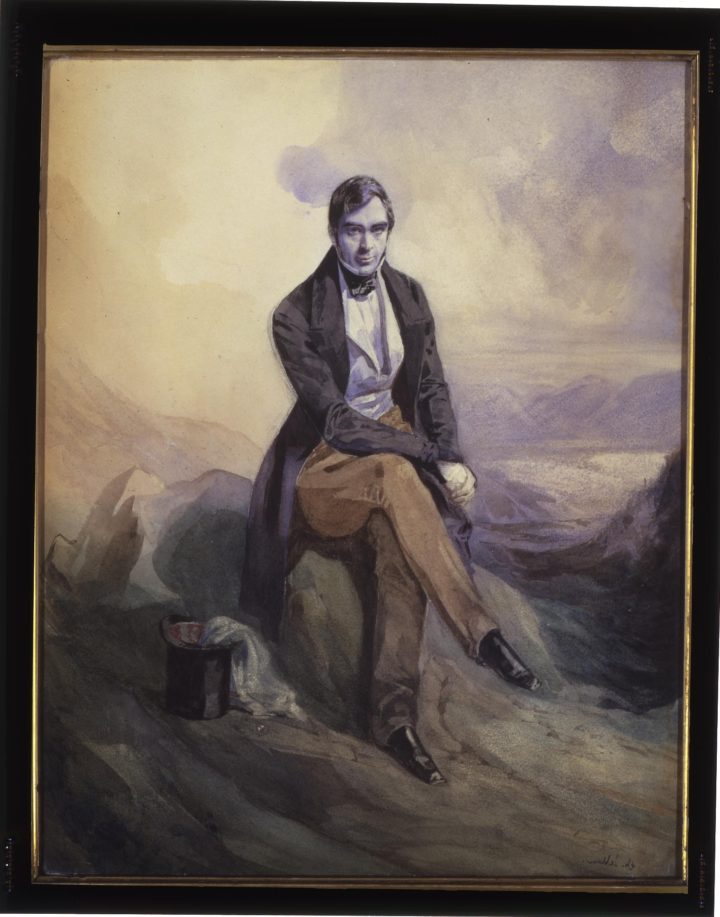
Portrait of George Bentham (EP-132) (The Linnean Society of London)
The Club was not without its problems; from the beginning there were clear concerns from prospective members that it should be conducted properly. In a letter to Smith on 17 December 1811, Samuel Goodenough states that “a scheme is in agitation to institute a Linnean dining Club like that of the Royal Society”. He declares that he will only join “if it can be made to answer my Ideas of a frugal literary dinner, where Eating is not the primary object”. He is also worried that the plans for it were moving too fast.
Later, in the 1820s, a rival dining club emerged, confusingly called the Linnean Society Club. In 1828, George Bentham, in a journal addressed to his family, mentions the Linnean Society, of which he hopes to become a member. He rather unkindly states that there are two clubs: the Linnean Club ('the bees') and the Linnean Society Club ('the drones'). According to Bentham, 'the bees', run by famed botanist John Lindley, “are compleatly [sic] masters, and carry every measure they please against the drones”, (run by Lambert).
Attempts to merge the two clubs proved unsuccessful, and they ran alongside each other for a number of years until the Linnean Society Club appears to have disbanded.
Only pausing for war

Correspondence file 'Linnean Club Resuscitation after the Great War of 1914–18' (LDC/3/9) (The Linnean Society of London)
The Linnean Club, on the other hand, went from strength to strength. Apart from the years of the First and Second World Wars, members have been meeting almost continuously since 1811 to this day, making it one of the oldest scientific dining clubs in London.
And it would have been at one of these meetings (over the last 200 plus years) that these drink tokens would have been issued, to ensure that Members (and guests) received their allotted drinks. Sadly we do not have a date for these particular port vouchers.
The archive of the Linnean Club (ref: LDC) has recently been catalogued, and contains minute books, financial records, correspondence, session papers, rules, lists of members, subscriptions, letter forms and, of course, two drinks tokens.
Detailed descriptions of the collection can be found on our archive catalogue.
